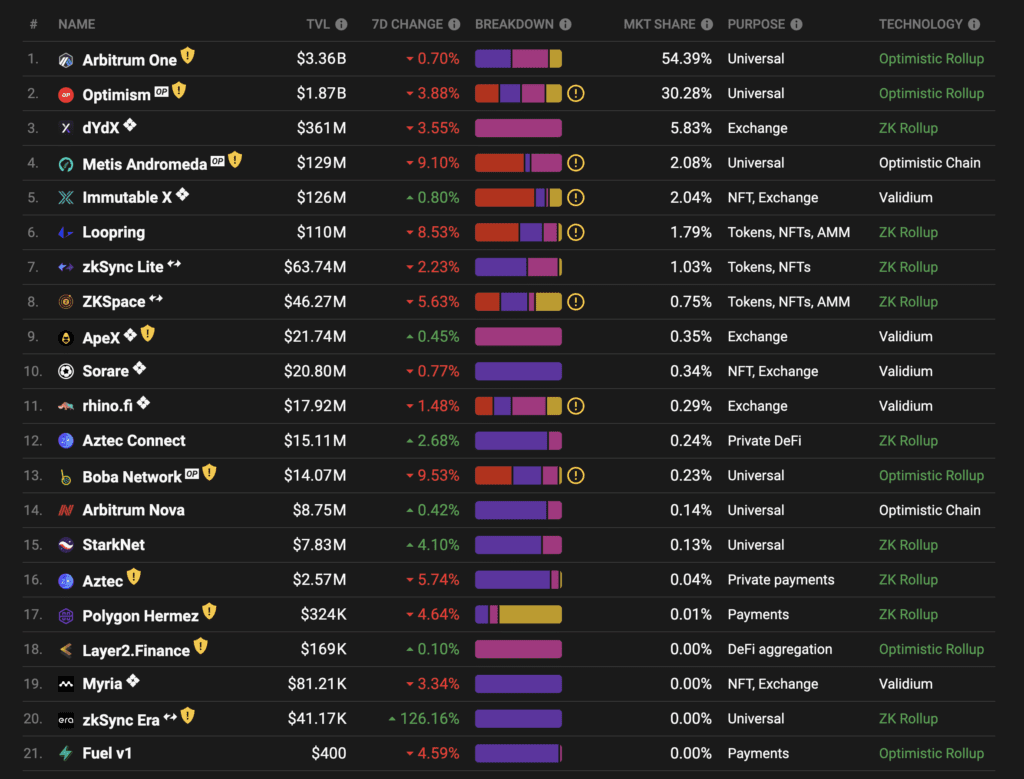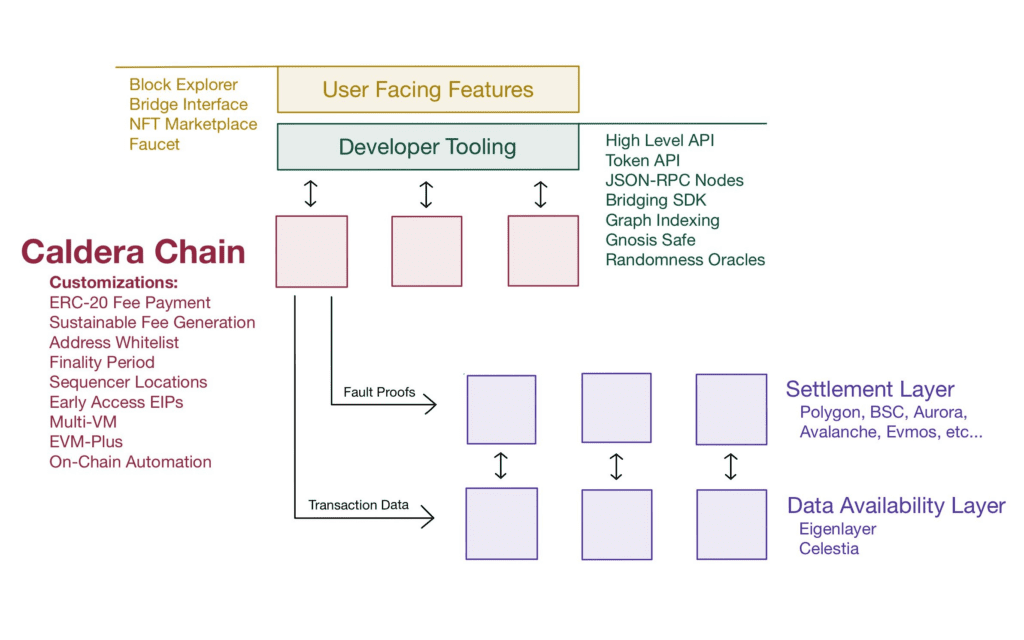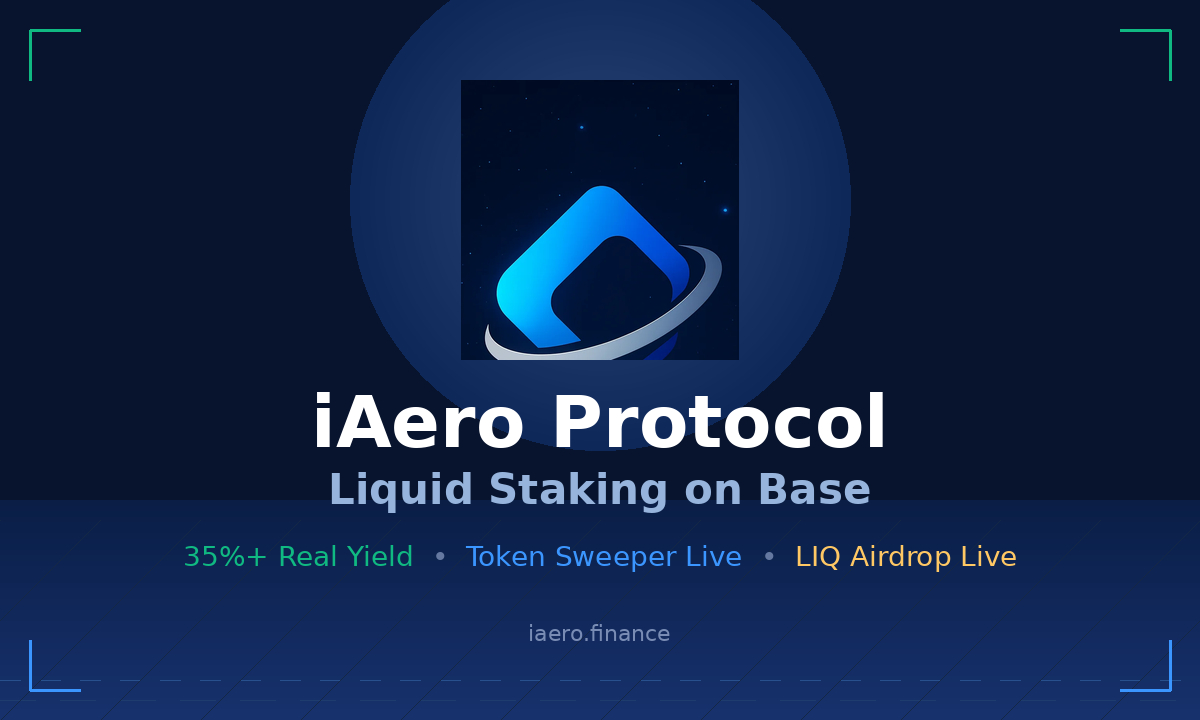Key Points:
- Coinbase can catalyze the development and improvement of Rollup Road through Base.
- RaaS still has a lot of potentials when funds are invested, and the roadmap is just starting.
Coinbase is making significant efforts to establish on-chain infrastructure, most notably announcing the development of a two-layer Rollup chain built on OP Stack – Base. For a time, the crypto market sounded the bullish “Bullish on Rollup” alarm. Coinbase’s move, as the biggest encrypted exchange in the United States, may catalyze the growth and improvement of the Rollup track.

Overview
The constraint of Ethereum network performance has given rise to a number of Layer 2 extension alternatives, with the Rollup solution leading the overall growth track. Ethereum is commonly considered a single blockchain network with three functional layers: data availability and consensus layer, settlement layer, and execution layer.
Because of the restricted block space, operating all functional layers in a single block takes a lot of chain resources, resulting in network congestion and an increase in chain gas prices.
Rollup is a modular extension solution that splits the execution layer from the single blockchain, off-chains difficult computations, and then returns the off-chain execution results to the chain for verification. Taking over Ethereum’s security In this instance, network performance can be considerably enhanced.
Arbitrum TVL is $3.36 billion as of March 6, accounting for 54.39% of the total Layer 2 track; Optimism TVL follows closely, and the combined TVL of the two has topped 80% of the market share. The Layer 2 rivalry appears to be controlled by Arbitrum and Optimism, but in truth, more and more Rollup solutions have sprouted up like mushrooms, presenting their creative narratives to erode a certain market share.

The most notable is a new tune called “Rollup as a Service,” which is based on it. RaaS, as the name says, symbolizes the deployment of Rollup as a service, which greatly simplifies the development of Rollup from 0 to 1.
The RaaS concept may be traced back to Celestia’s Optimint (now called Rollkit) in 2021, with the goal of providing developers with a comprehensive set of generic software development kit (SDK). The core of this track is the OP Stack stack suggested by the Optimism team. Coinbase, a typical project, recently constructed its Optimistic Rollup (ORU) Basis on OP Stack. This is a beginning point and an opportunity that has sparked my interest in the RaaS path.
Before we go into the individual projects of the RaaS track, let’s look at the causes and driving forces behind the track’s inception, ascent, or impending development. The main driving factor is demand: the restrictions of Ethereum performance have produced the need for extension, so there is Rollup; it is difficult to install a chain from 0 to 1, and thus there is the rise of RaaS. The basis of the above position is, of course, that Rollup has demand. The market has now validated the need for general-purpose rollups; however, the market has yet to validate the demand for specialized application-type Rollup.
RaaS
The RaaS track includes numerous additional projects, in addition to the aforementioned Optimism’s OP Stack and Celestia’s Rollkit. RaaS initiatives may be classified into two groups based on whether or not they require coding: SDK and No-Code (No-Code) solutions.
The SDK solution provides developers with a comprehensive set of general software development kits, making Rollup deployment as simple as smart contract deployment; the no-code approach, as the name implies, eliminates the need to write a single line of code to install Rollup (one-click release chain).
OP Stack and Rollkit are SDK solutions, while Dymension, Sovereign, and Stackr are also in this category. AltLayer, Saga, Eclipse, and Caldera are among the projects that use Rollup without writing any code. It will not take long to discuss each project in the RaaS track in detail, but only a quick overview. The paper focuses on some of my personal ideas about the RaaS path, with the hope of encouraging others.
SDK
OP Stacking
The Optimism team’s software stack to actualize the modular blockchain architecture, which separates the blockchain network into three functional levels: consensus layer, settlement layer, and execution layer, is known as OP Stack. The process of constructing a modular blockchain is substantially simplified by decoupling distinct functional levels and merging all levels in the form of API software stacks.
Rollup developers have more freedom with OP Stack since they can switch, change, and alter different module levels just like they can swap APIs. The Optimist team suggested what they consider to be the final version of the blockchain “super chain,” which is made up of a collection of highly interconnected OP Stack chains that interact via a standard message-passing protocol to facilitate interoperability amongst Rollup networks.
Rollkit
The Celestia community created Rollkit, a modular hair chain SDK. Rollkit is equal to Tendermint in terms of Cosmos Layer 1 when compared to Rollup. To boost scalability, developers can construct Rollup atop the data availability (DA) and consensus layer offered by Celestia. Moreover, Rollkit has the benefit of customization, since the DA layer, sorter, execution environment, proof method, and so on may all be modified.

Dymension
Dymension’s RollApp Development Kit (RDK) functions similarly to the Cosmos SDK in that it assists developers in deploying RollApps (Rollups based on specific apps) atop the Dymension settlement layer. The settlement layer’s job is to maintain the security of all RollApps, also known as Dymension Hub; in other words, all RollApps built on RDK share Dymension Hub’s security. It should be noted that Dymension introduced the RollApp Virtual Machine (RVM) in the settlement layer, and RVM provides a novel dispute resolution method, allowing it to accommodate a variety of execution settings.
Stackr
Of of 130+ ideas, Stackr was one of 22 winning projects in the Layer 2 Community Grants 2022 held by the Ethereum Foundation. Its goal is to make it easier for developers to install App-specific ORUs using the Stackr SDK.
Sovereign
Sovereign is a little “different” from the previous four Rollup SDK applications. The above SDK solutions all begin with the development of ORU based on fraud proofs, whereas Sovereign begins with the construction of zk-rollup (zkRU) based on zero-knowledge proofs.
Cryptography’s most challenging branch is zero-knowledge proof. The construction of zk-rollup necessitates a good basis in cryptography. Sovereign’s SDK allows developers without professional expertise in cryptography to use zero-knowledge proof technology to create public chains, making zk-rollup as simple to create as a dApp.
No-Code
AltLayer
AltLayer is a sample no-code Rollup solution that aims to alleviate the problem of a single popular Dapp congesting the whole network. Because multiple Dapps on the same blockchain network share limited block space, when transactions on a single Dapp chain spike (for example, NFT casting operations for a limited period), the entire network becomes congested, and gas costs skyrocket. By installing Flash Layer, AltLayer offers a one-time execution layer, a dedicated block space for NFT casting events, is totally isolated from other projects on the chain, and shuts the execution layer when the casting activity concludes, hence boosting network scalability.
Saga
Saga is a Cosmos ecosystem project with the goal of creating a thousand-chain environment through horizontal development. Saga’s design is identical to that of the previously stated SDK solution Dymension, and Rollup is known as Chainlet in the Saga architecture.
Because it is based on the Saga main network, all Chainlets share the Saga main network’s security. Chainlets can function without native tokens thanks to shared security. Saga will first focus on Web 3 infrastructure, such as games and entertainment chains, since improving and expanding the underlying infrastructure of chain games has become an important topic to tackle.
Eclipse
Rollup is built on Eclipse’s settlement layer, which tries to offer a standard settlement layer for any Layer 1. Eclipse offers developers a highly extensible Rollup architecture that allows them to select virtual machines, data availability levels, and so on separately. Celestia, Polygon, and EigenLayer are now supported by Eclipse, and additional Layer 1 networks will be supported in the future.

Caldera
Caldera offers “one-click ORU chain issuance,” which reduces the time it takes to build a Rollup to minutes. The Cladera chain modular stack is made up of three parts: the Caldera Chain (execution layer), the EVM settlement layer, and the data availability layer (DA). As the settlement layer, it may be built on any EVM-compatible chain, and Caldera’s execution layer is ORU based on fraud-proof, which means that the security of the Rollup network is maintained by operating a fraud-proof mechanism.

Modular Architecture in Rollup
It may be generally classified into three categories from the standpoint of Rollup’s modular architecture:
General Smart Contract Rollup
For example, layer 1 (such as Ethereum/Polygon) is in charge of settlement + consensus + data availability, while the execution layer (Rollup) is independent of the monolithic chain. Examples are Optimism and Arbitrum.
Settlement Rollup
Layer 1 is in charge of consensus and data availability, whereas the settlement layer operates independently. Rollup is created atop the settlement layer, and the resulting Rollup shares the settlement layer. According to their roles, settlement Rollup may be separated into application-specific settlement Rollup and general-purpose settlement Rollup. RollApp, for example, is built on Dymesion Hub, while Chainlet is based on Saga Chain.
Sovereign Rollup
Layer 1 is in charge of consensus and data availability, whereas Rollup is in charge of settlement and execution. We believe Rollup has “sovereignty” since it can assess the legitimacy of its own transactions. Sovereign Rollup, like settlement Rollup, may be separated into application-specific sovereign Rollup and general-purpose sovereign Rollup based on their purposes. Rollup, for example, is based on the Celestia Rollkit.
Rollup is classified into five types: general Rollup, application-specific + general-purpose settlement Rollup, application-specific + general-purpose settlement sovereign Rollup, and application-specific + general-purpose settlement sovereign Rollup. When paired with the proof method (zero-knowledge proof/fraud proof), 5 kinds (2 = 10 Rollup combinations) may be derived.
To construct Rollup, developers can use Celestia/Eigen DA as the data availability and consensus layer and Dymension/Saga/Eclipse as the settlement layer. When the number of modular projects increases, the resultant modular Rollup combination may even exceed.
There are hundreds of Rollup combinations, and all of them may be readily and conveniently implemented using the infrastructure offered by RaaS-related initiatives. The RaaS track’s potential cannot be overstated.
What are the advantages of RaaS?
- Funds support RaaS-related projects;
- RaaS offers a modular blockchain-based innovation model;
- The Rollup Roadmap has not fully explored yet, and the RaaS roadmap is even in its early stages.
Of course, opportunities and challenges coexist. Whether it’s Rollup or RaaS, there are still many unanswered questions.
Conclusion
Even before the public chain spread on a broad scale, the topic of heated debate was whether the future public chain structure should be single-chain or multi-chain.
A similar dilemma arises regarding Rollup: Would the Rollup structure be dominated in the near future by a single Rollup or by several Rollups striving for success? But who will survive the intense struggle in the end, and who will go from history’s Rollup stage? Nobody knows for sure; only time will tell.
DISCLAIMER: The Information on this website is provided as general market commentary and does not constitute investment advice. We encourage you to do your own research before investing.
Join us to keep track of news: https://linktr.ee/coincu
Harold
Coincu News

















